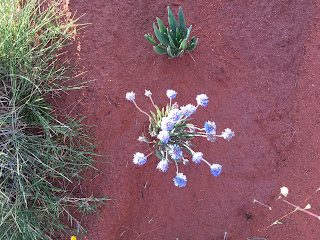The name evokes so much - there is romance in it, wilderness and adventure and a sense of the outback. It is literally in the centre of this vast continent and sits comfortably between the two sides of the MacDonnell Ranges.
The town began its life as Stuart as a repeater station for the Overland Telegraph Line which ran from Adelaide to Darwin. Alice Springs was the name given to a waterhole by WWMills when he was exploring the area. Alice was the wife of Sir Charles Todd the Superintendent of Telegraphs. The Telegraph station was built next to the waterhole. In 1933 the town became Alice Springs.
The Central Australian desert around Alice Springs was the home of the Arrernte Aboriginal people for thousands of years prior to the arrival of the first Europeans. In fact, archaeological evidence suggests that the area has been occupied for perhaps 30,000 years. This makes Alice Springs one of the world's oldest continuously inhabited places.There are some lovely heritage buildings in the centre of the town, like the Residency, the first governor's house, the Hospital and the Flying Doctor service Tourist facility. For a birds' eye view we climbed up to Anzac Hill.
Today Alice has a thriving aboriginal population and a lively arts scene. While we were there we were able to visit a few galleries but also the Araluen Cultural Precinct which houses some of Alice's significant art works and cultural artefacts. The Desert Mob exhibition which is on at the moment, is not to be missed.
The Heritage Listed "Residency" where Queen Lizzie and Philip spent two nights while on a tour of the area. The house has period furniture and an interesting account of the history of the time. One of the more memorable characters was an Aboriginal man called Tjunkata Nosepeg Tjupurrula.


















































